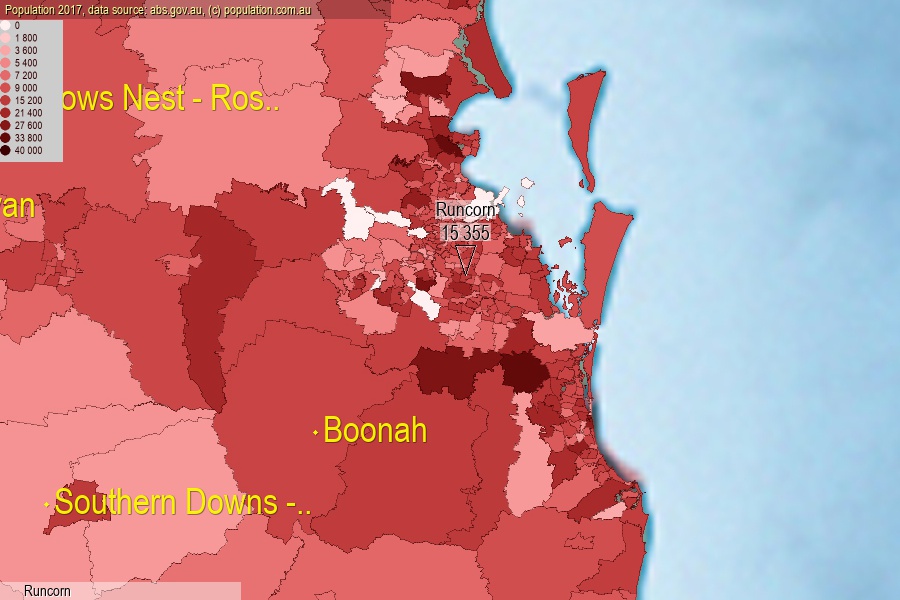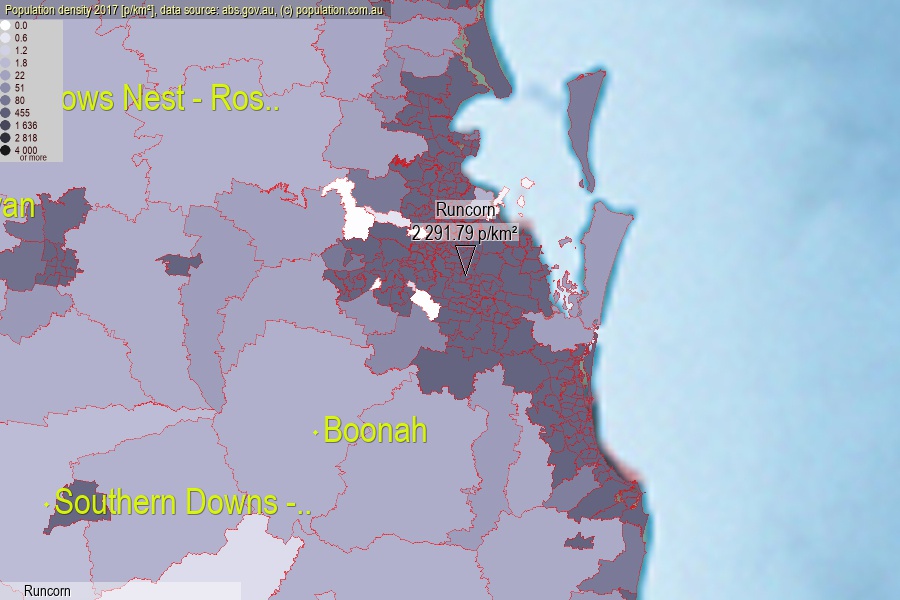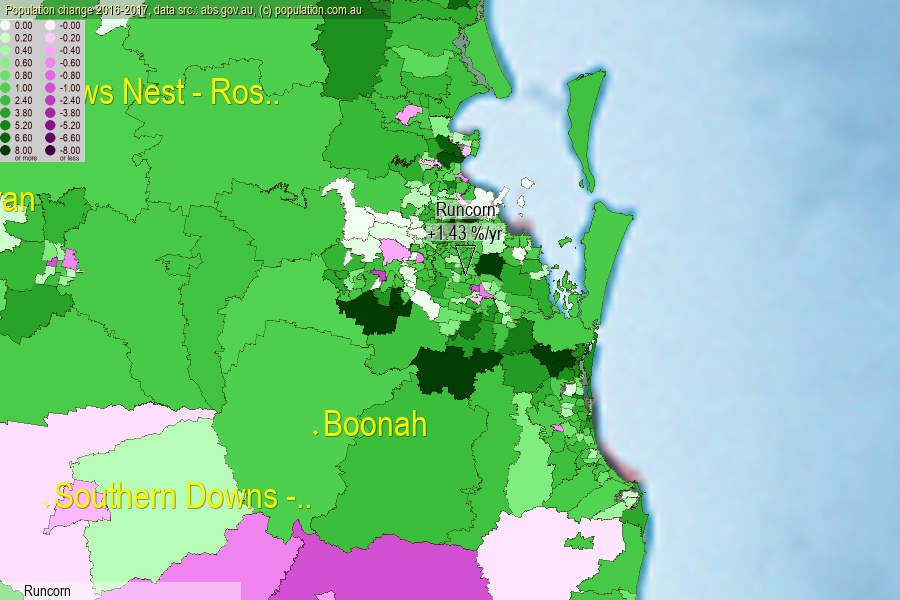 population.com.au
population.com.auLast official estimated population of Runcorn (as Statistical Area Level 2) was 15 355 people (on 2017-06-30)[2]. This was 0.06% of total Australian population and 0.308% of QLD population. Area of Runcorn is 6.70 km², in this year population density was 2 291.79 p/km² . If population growth rate would be same as in period 2016-2017 (+1.43%/yr), Runcorn population in 2025 would be 17 198. [0]



Click to enlarge. Runcorn is located in the center of the images.
Population [people], population density [p./km²] and population change [%/year] [2]
View borders » (new window) [4]
[1991-1992] +5.10 %/Yr.
[1992-1993] +5.15 %/Yr.
[1993-1994] +3.31 %/Yr.
[1994-1995] +4.61 %/Yr.
[1995-1996] +2.70 %/Yr.
[1996-1997] +8.93 %/Yr.
[1997-1998] +5.93 %/Yr.
[1998-1999] +6.57 %/Yr.
[1999-2000] +5.36 %/Yr.
[2000-2001] +3.07 %/Yr.
[2001-2002] +1.80 %/Yr.
[2002-2003] +0.82 %/Yr.
[2003-2004] -0.81 %/Yr.
[2004-2005] +0.30 %/Yr.
[2005-2006] +1.54 %/Yr.
[2006-2007] +1.31 %/Yr.
[2007-2008] +1.79 %/Yr.
[2008-2009] +1.89 %/Yr.
[2009-2010] +0.94 %/Yr.
[2010-2011] +2.14 %/Yr.
[2011-2012] +2.33 %/Yr.
[2012-2013] +2.11 %/Yr.
[2013-2014] +1.70 %/Yr.
[2014-2015] +0.72 %/Yr.
[2015-2016] +1.24 %/Yr.
[2016-2017] +1.43 %/Yr.
[0] Calculated with linear interpolation from officially estimated population
[1] Read more about SA2 and Australian Statistical Geography Standard (ASGS) on abs.gov.au
[2] Population data from Australian Bureau of Statistics (Population and density: 2017; change: 2016-2017)
[3] Digital Boundaries: Australian Statistical Geography Standard (ASGS) 2016.
[4] Border coordinates are simplifyed using Ramer-Douglas-Peucker algorithm.